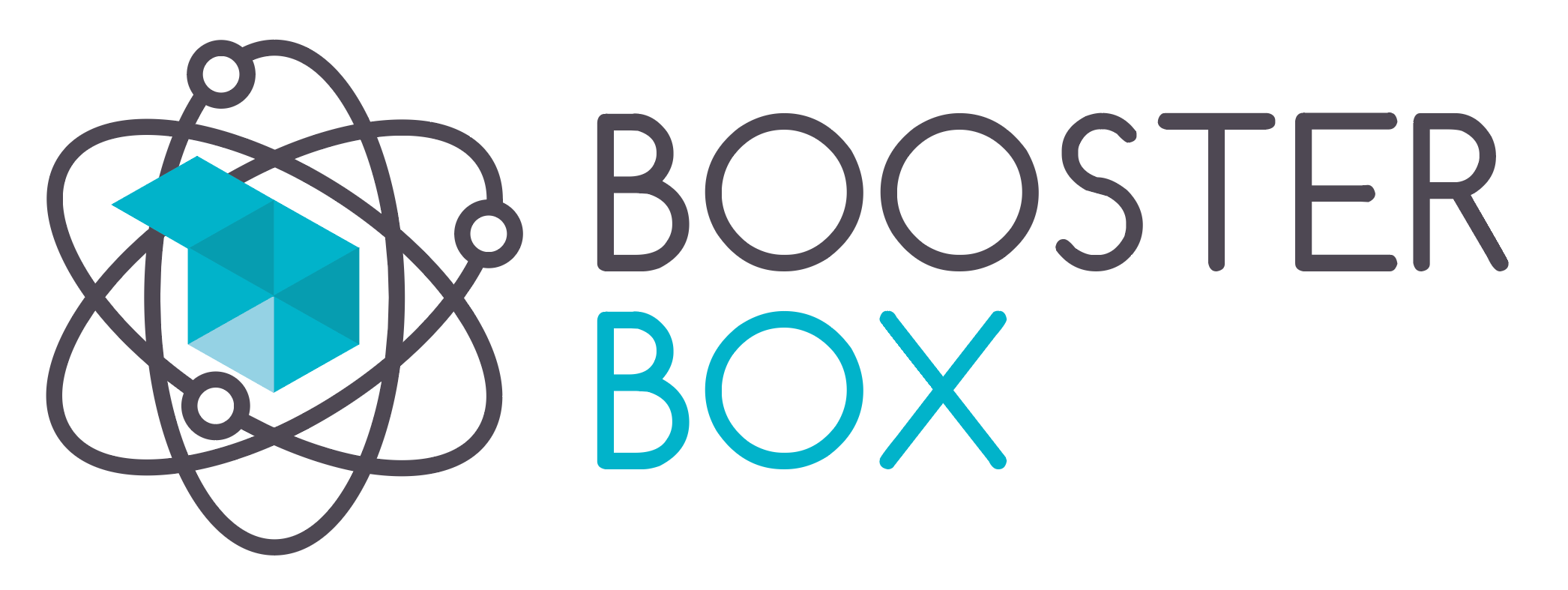
by Daniele Masiello | Apr 11, 2024 | AI & ML, Performance Marketing, PPC Strategy
In the fast-evolving landscape of digital marketing, artificial intelligence (AI) and machine learning (ML) stand at the forefront, revolutionising the way brands connect with their audiences. From hyper-personalised ad targeting to predictive analytics enhancing campaign success, these advanced technologies are reshaping the future of advertising.
Dive into this insightful exploration to discover how AI and ML are propelling the digital marketing realm towards unprecedented levels of efficiency and effectiveness, unlocking a world of opportunities for global companies eager to maximise their advertising impact.
Introduction to Advanced Advertising
Marriage of Marketing and Technology
Marketing and technology have tied the knot, and it’s a match made in heaven for digital advertisers. This union offers a dynamic duo that can target audiences with precision, making sure that every ad dollar is spent wisely.

AI and ML are not just tools in the marketer’s belt but are becoming central players in crafting and deploying strategies. They analyse vast amounts of data, identifying patterns that could take humans ages to uncover. This partnership is about using technology not only to understand the consumer but also to predict their behaviour, which in turn, informs how and when to engage with them.
The result? Campaigns that are smarter, more responsive, and ultimately, more effective in driving results. This convergence of marketing and tech is redefining the landscape, and it’s just the beginning.
Understanding AI and ML Basics
To get a grip on AI and ML, think of AI as the broader concept where machines carry out tasks in smart ways, mimicking human intelligence. ML is a subset of AI, focusing on the ability of machines to receive data and learn for themselves.
It’s all about algorithms and statistical models that computers use to perform tasks without being explicitly programmed for each step. Imagine feeding a machine a diet of data – over time, it starts to recognize patterns and make decisions based on its learning. That’s ML at work.

It’s not about robots taking over the world; it’s about them helping us to understand our world better. For marketers, this means tapping into a wealth of insights to craft campaigns that really resonate. And that’s just scratching the surface.
AI and ML: The New Marketers
How AI is Changing Advertising Game
AI is shaking up the advertising world by bringing in a level of precision and personalization we’ve never seen before. Instead of casting a wide net with generic messages, AI powers targeted ads that speak directly to the individual’s interests and needs. It’s like having a personal shopper for your digital life, suggesting products you’re likely to buy or content you want to see.
AI’s machine learning algorithms analyse user data – from browsing history to purchase patterns – and then predict what kind of ad will hit the mark. This means higher conversion rates for companies and less ad fatigue for consumers. Plus, AI is always on the job, optimising campaigns in real-time and learning from what’s working (and what’s not). It’s a game changer that’s transforming clicks into customers more efficiently than ever.
Machine Learning and its Advertising Applications
Machine learning is the secret ingredient that’s supercharging advertising applications. By sifting through mountains of data, ML spots trends that would be invisible to the human eye.
Take programmatic advertising, for example. ML algorithms are the puppet masters, buying and placing ads in milliseconds based on user behaviour, ensuring the right message reaches the right person at the perfect time. It doesn’t stop there. ML helps in optimising budgets by allocating funds to high-performing channels and cutting corners on the rest.
It’s also behind the scenes, fine-tuning search engine marketing so that potential customers find what they’re searching for faster. What’s more, by analysing customer feedback and sentiment on social media, ML helps brands pivot their strategies in real time, staying ahead of the curve. This isn’t just the future of advertising; it’s the now, and it’s brilliant.
Real-world Use Cases of AI and ML in Advertising
Influential Brands Using AI and ML
Some of the biggest names in business are harnessing the power of AI and ML to take their advertising to the next level. Amazon makes product recommendations with uncanny accuracy, thanks to ML algorithms digesting your shopping habits. Netflix uses similar technology to suggest shows and movies, keeping you glued to the screen.
Over in social media, Facebook and Google optimise ad placements with AI that factors in countless user data points. Then there’s Nike, leveraging AI to craft personalised marketing campaigns that not only engage but also build a deeper connection with their customers.
These influential brands are proof that AI and ML are not just passing trends but essential tools for staying competitive in today’s cutthroat advertising landscape. They’re leading the charge and setting the standard for what’s possible in digital marketing.
AI and ML Shaping the Programmatic Advertising
Programmatic advertising has been completely revamped with AI and ML, making ad buys more efficient and targeted than ever before. Instead of the traditional, time-consuming process of ad placements, AI algorithms now handle the heavy lifting, buying ad space in real-time through automated bids.
This means ads are more likely to be seen by people who are genuinely interested in what’s being offered. ML takes it further by analysing performance data to continuously improve targeting strategies and optimise ROI.
The result? Ads that are not only seen but also acted upon.

This shift has been a game-changer for advertisers who now have more control over their ad spend and can see tangible results from their campaigns. AI-driven programmatic advertising is not only more cost-effective but also delivers a level of personalisation that was once thought impossible.
Coming Impact of AI and ML on Digital Marketing
AI and ML: The Future of Personalised Marketing
The future of personalised marketing shines bright with AI and ML at the helm. We’re moving towards a world where marketing feels less like a business transaction and more like a personal conversation.
AI excels at picking up on the nuances of consumer behaviour, enabling hyper-personalised content that speaks directly to individual needs and preferences. With ML’s predictive analysis, marketers can anticipate customer needs before they even articulate them, offering solutions at just the right moment.
This level of personalisation not only enhances the customer experience but also fosters loyalty and increases the lifetime value of each customer. In the future, we can expect AI and ML to keep pushing the boundaries, making every digital interaction feel tailor-made. The one-size-fits-all approach is on its way out, and personalised marketing is here to stay.
How to Prepare for the ML and AI Marketing Revolution

To get ready for the ML and AI marketing revolution, start by embracing data. The more quality data you have, the better these technologies can work for you. Invest in tools and platforms that leverage AI and ML to analyse customer interactions and gather actionable insights.
Building a team with the right skill set is crucial; look for talent that understands data science as well as marketing. Training existing staff on the basics of AI and ML can also be beneficial. Keep an eye on emerging trends and applications of AI in marketing to stay ahead of the curve.
Most importantly, keep the customer experience front and centre. Use AI and ML to enhance, not replace, the human elements of marketing. By preparing now, you’ll be well-positioned to ride the wave of the AI and ML marketing revolution.
Conclusion: Embrace the Future of Advertising
Are You Ready for Advanced Advertising?
So, are you ready to jump on board with advanced advertising? The AI and ML train is leaving the station, and it’s picking up speed. If you’re still relying on traditional methods, you might find yourself left behind.
Embracing AI and ML doesn’t just mean staying current; it means being a leader in a space that’s constantly evolving. It’s about understanding your customers on a deeper level and meeting them where they are with solutions they crave. The question isn’t whether AI and ML will be a part of the future of advertising – it’s whether you’ll be at the forefront, using these tools to create campaigns that resonate and drive results. The opportunity is here, and it’s yours for the taking. Are you on board?
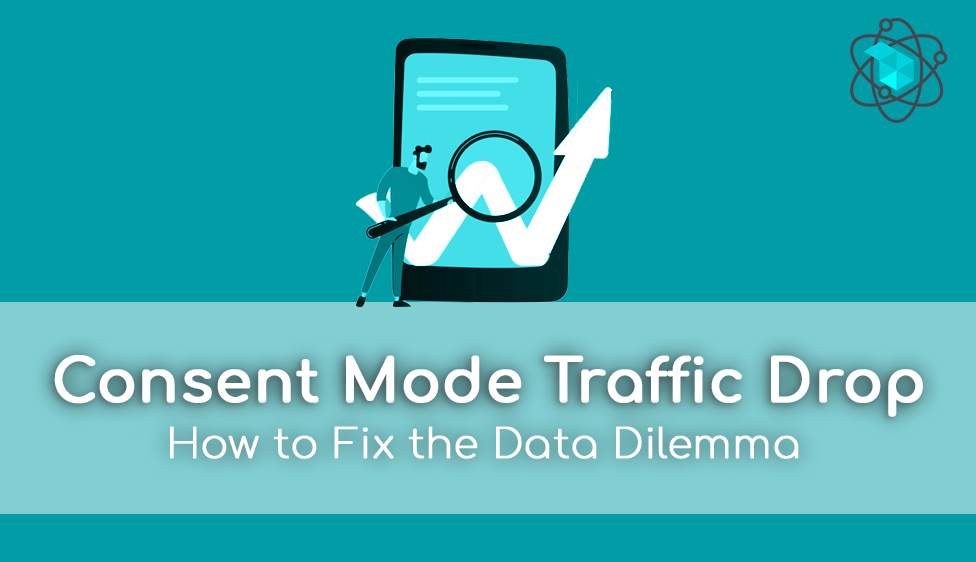
by Daniele Masiello | Mar 21, 2024 | Analytics, Consent Mode V2, Digital Markets Act, Tracking
Ever hoped for a bit of calm after implementing Consent Mode V2?

Well, in the fast-paced world of advertising, tranquillity is about as common as spotting a unicorn. As the philosopher Arthur Schopenhauer famously quipped, “the two foes of human happiness are pain and boredom”.
But let’s be real, boredom – in advertising? Non-existent.
It’s a constant whirlwind of activity, never a dull moment. But let’s cut the theatrics and get down to business, especially when facing the challenges of the Consent Mode traffic drop.
THE EVIDENCE BEHIND CONSENT MODE TRAFFIC DROP
Let’s start with the basics: life in advertising is dangerous, yes, we heard you. “We’re all in this together” (if you’re singing the High School Musical song now, you had a nice and sweet childhood. Well you might have had a good one even in the other case but come one – there’s no comparison).
Also, as you know, we’re data-driven-and-dangerous. Like life in advertising, but in a good way. This to say, we had to provide scientific evidence of what we’re talking about. Accounts implementing Consent Mode witnessed:
- A drop in traffic ranging from 40% to a jaw-dropping 90%, when implemented alongside a cookie banner
- Modelling taking a leisurely stroll into reports, with some reports playing hard to get for up to 20 days
Considerations:
- A 40% to 70% organic drop is expected, with higher drops possibly linked to factors like brand trust for each specific market
- Some accounts fail to meet Google’s requirements for Consent Mode data integration into GA4 reports
WHAT IS THAT SUPPOSED TO MEAN?

Let’s decode the jargon. What’s the deal with advertisers experiencing severe performance drops in ROAS, Conversions, CPA, and AdSpend post-Consent Mode V2 implementation?
Switching to Consent Mode disrupts the flow of data to Analytics and Advertising platforms, leaving campaigns in a state of shock. Each campaign, much like each session with ChatGPT, is unique and starts collecting data afresh. So, when the data faucet suddenly changes course, confusion ensues. It’s like algorithms are having an existential crisis:
- Is it my fault?
- Did things change dramatically?
- Shall I lower that bid?
In a nutshell, it’s like flipping the script on campaigns, but instead of tweaking external factors like budget or targets, we’re messing with the very fabric of data streams and experiencing the repercussions of the Consent Mode traffic drop.
A NECESSARY DETOUR
We could simply provide a link and call it a day, but where’s the fun in that? We prefer to take a more scenic route, much like Virgil guiding Dante through the circles of Hell (wow, we went pretty hard on that!) As performance marketing experts, we’re committed to ensuring you understand every step of the journey.

So, let’s delve into Google’s prerequisites for Consent Mode data integration:
- Ensure Consent Mode is activated across all pages of your websites or all app screens
- Implement Consent Mode for web pages so that tags load before the consent dialog appears, ensuring Google tags load in all instances, not just when the user consents (advanced implementation)
- Your property should collect a minimum of 1,000 events per day with analytics_storage=’denied’ for at least 7 days
- Ensure you have at least 1,000 daily users sending events with analytics_storage=’granted’ for at least 7 of the previous 28 days
- Note that meeting the data threshold within the specified timeframe may take more than 7 days, and additional data may still not be sufficient for Analytics to train the model effectively
Navigating these prerequisites is crucial for addressing the challenges posed by the Consent Mode traffic drop.
HELLO CONSENT MODE TRAFFIC DROP
You implemented Consent Mode, and suddenly, traffic and performance are on a downward spiral. You’re nodding in agreement, feeling the frustration. We’re not claiming clairvoyance here; it’s just a matter of analysing the data. We rely on data for everything, even stocking our headquarters’ cereal supply – talk about being prepared for any scenario.
Where were we? Ah, yes, the drop in tracked data. Two scenarios unfold:
- Scenario 1: It’s a waiting game. After the time it takes for machine learning to track data, accounts return to their pre-implementation traffic levels. No need to panic; just give it time. After all, Rome wasn’t built in a day.
In this scenario, two burning questions arise:
1) How long does it take for data to bounce back?
Answer: It varies, depending on the volumes of the website where Consent Mode was implemented. Typically, it ranges from 7 to 20 days
2) Are there any metrics that remain different from before?
Answer: Yes, new user metrics tend to recover more slowly than other metrics
- Scenario 2: The drop persists, signalling a deeper issue. This happens when accounts fail to adhere to Google’s requirements.
FIX TO SCENARIO NUMBER ONE
Fixing time? Not exactly possible, but hey, good things come to those who wait, right? So, grab a coffee, binge-watch a show, and relax. The Consent Mode traffic drop will work out eventually.
Feeling sceptical? No worries – piece of cake (sorry for making your stomach growl, our bad). Just get in touch, and we’ll provide reassurance. Easy peasy.
FIX TO SCENARIO NUMBER TWO
Yass, the wait is over. The much-awaited solutions to your dilemmas are finally here (well, those regarding Consent Mode traffic drop of course – we’re nerds, not the Cumaean Sibyl).
So, what are the options to solve this?
- Export data in BigQuery:
Dive into the sample data retrieved by Consent Mode to understand why your modelling isn’t working as expected
(Keep in mind, though, that this export might incur some costs if you don’t have it enabled. Reach out to us for clarification)
- Analyse user behaviour with our banner script + CRO:
Our custom script delves into how users interact with your banner, providing insightful analysis. Based on this data, we can offer feedback to enhance your banner and drive users towards the “accept all” option. Sounds too good to be true? It’s the real deal.
- Utilise offline imports:
Integrate events and information seamlessly to mitigate the impact of Consent Mode.
- Assess Consent Mode implementation:
Take a closer look at how Consent Mode is implemented across your platforms. Or maybe just ask us to do so.
- Set up a Server-to-Server tracking implementation:
Enable Server-to-Server tracking to send data and disable ad personalization and ad_user_data
- Explore analytics alternatives:
But that’s a story for another time. However, if you’re keen to explore different analytics options, reach out to us
Did you notice that for chapter six, we’ve prepared six different solutions?
Impressive, right?
Wait – did you really notice that? Shall we swap stories about our OCDs?
SO, SO WHAT?
I’m still a rockstar, I got my rock moves…

… sorry, we got carried away by rock and roll 🤘🎸
You might still feel a bit confused, or maybe you simply can’t be bothered. Or perhaps both. Or maybe none of the above, but you’re feeling a bit lonely 🫂 So, where do we go from here?
Well, you’ve got to start somewhere, right? Figure out what’s happening with Consent Mode traffic drop, what you need, whether you should take action now or just wait it out a bit longer. Or at the very least, have a plan ready to roll.
We reckon a consent mode assessment could give you the lowdown and help you plot your next move. Get in touch, and we’ll have you sorted in no time.
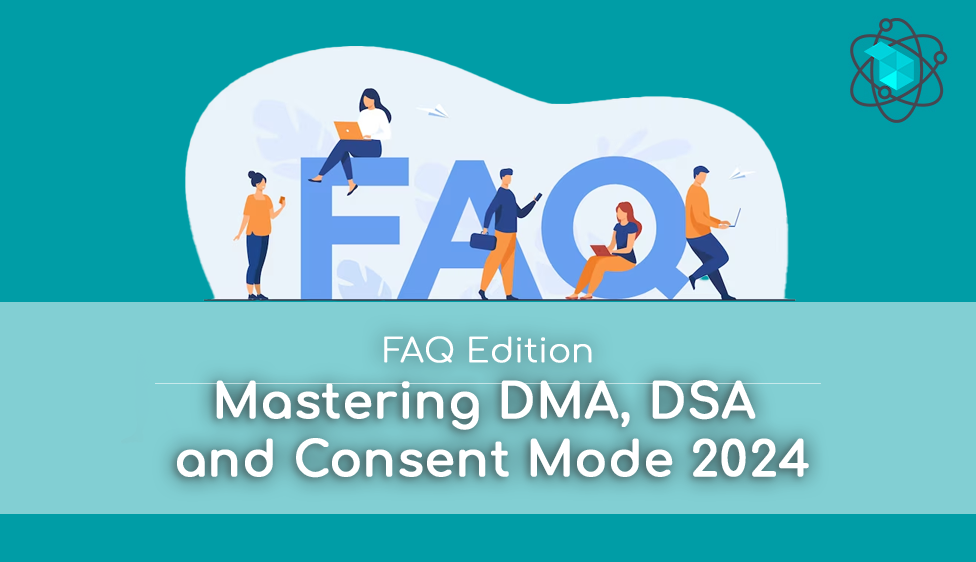
by Daniele Masiello | Feb 28, 2024 | Analytics, Consent Mode V2, Digital Markets Act, Digital Services Act, Tracking
Embarking on a transformative journey through the intricate landscape of digital regulations, we have not merely seen these regulatory changes as obstacles but as opportunities to showcase our expertise, provide immense value to our clients, and unlock new avenues for growth. Recognising the pivotal role of Consent Mode in the evolving digital advertising landscape, we proactively embraced these changes.
In our ongoing pursuit of knowledge sharing, we present a unique FAQ Edition blog post, delving comprehensively into the Digital Markets Act (DMA), Digital Services Act (DSA), and Google Consent Mode V2. Taking a step back, as we journeyed through this regulatory terrain, our commitment to demystifying complexities has been evident in each piece we crafted.
- We explored the significance of Consent Mode V2, shedding light on its features and illustrating why it’s crucial in the evolving digital advertising landscape
- We provided practical insights into implementing Consent Mode V2, offering a comprehensive guide on compliance and strategies to leverage its features for advertising success
- We delved into the DMA’s profound impact on tech giants, gatekeepers, and the challenges posed by compliance
- We took a deep dive into the regulatory landscape, navigating the challenges introduced by the DSA, thus providing businesses with a strategic guide for successfully navigating compliance
Disclaimer: as we present this FAQ Edition, your questions become the focal point of our continued knowledge sharing. So keep the inquiries coming, as this FAQ edition thrives on your questions! Reach out, and with your permission, we may feature your queries in upcoming blog posts.
REACH OUT
Digital Markets Act: Navigating Compliance and Beyond
How do we ensure DMA compliance for our banner advertisements?
A: Achieving DMA compliance for banners requires meticulous practices. Dive into our comprehensive guide, exploring the intricacies of compliant banners, and understand how to align your digital marketing assets with DMA principles.
However, we understand that navigating regulatory nuances can be intricate. For personalised technical support and to ensure every aspect is in place, get in touch with us now. Our expert team is here to guide you through the process seamlessly. Let’s make sure your banner advertisements not only catch the eye but also comply with the evolving regulatory landscape 😉
Does the impact of DMA extend globally, or is it confined to the EU?
A: While the DMA originates from the European Union, its impact extends far beyond the borders of the EU. The regulation has global implications, particularly for companies operating on a global scale. Even if your business is based outside the EU, if it meets the specified criteria, it may fall under the purview of the DMA. Understanding the global reach of the DMA is crucial for businesses seeking comprehensive compliance and navigating the evolving landscape of digital regulations.
Why is DMA pivotal for marketers, and how does it reshape advertising strategies?
A: The Digital Markets Act implies for marketers a paradigm shift in advertising strategies. The DMA compels a reevaluation of how user data is managed, emphasising transparency and user consent. It challenges the status quo, moving away from unchecked dominance towards an ecosystem that prioritises fair competition and accessibility for businesses of all sizes.
Marketers need to adapt to these changes by refining their advertising strategies to align with the principles of the DMA. This involves a more transparent approach to data management, ensuring user consent is prioritised, and embracing a landscape where fair competition is at the forefront.
Are specific industries more affected by DMA, and how do these nuances manifest?
A: The impact of the Digital Markets Act nuances manifest differently in each industry, requiring businesses to conduct industry-specific assessments and tailor their strategies to comply with the regulatory framework. Our industry-specific breakdowns provide valuable insights to navigate these nuances effectively, send us a message to get yours!
Can DMA compliance be approached proactively to gain a competitive advantage?
A: Absolutely. Beyond mere adherence, proactive DMA compliance is an opportunity. By embracing it strategically, businesses can enhance brand reputation, build trust, and differentiate themselves in the competitive digital landscape. It’s not just compliance; it’s a path to leadership.
How can smaller businesses navigate DMA compliance with limited resources?
A: Navigating DMA compliance for smaller businesses requires a tailored approach. Focus on essential steps, such as prioritising key compliance areas, leveraging automation tools, and seeking industry collaborations. By strategically allocating resources and staying informed, smaller enterprises can efficiently navigate the regulatory landscape introduced by DMA.
In the event of non-compliance, what potential consequences might businesses face under DMA?
A: In the event of non-compliance, businesses may face severe consequences under DMA. Penalties can include substantial fines, restrictions on operations, and damage to brand reputation. To mitigate risks, proactive steps are crucial, such as regular compliance audits, staying updated on regulatory changes, and seeking legal counsel when needed. By prioritising compliance, businesses can navigate DMA regulations effectively and avoid potential repercussions.
Digital Services Act: Navigating Obligations and Preparing for Change
What types of organisations fall under the jurisdiction of the Digital Services Act?
A: Under the Digital Services Act, a broad range of organisations falls under its jurisdiction. This encompasses online platforms, hosting services, and various digital service providers. The DSA aims to regulate entities that play a significant role in the digital landscape, ensuring a safer, fairer, and more accountable digital environment.
When is the Digital Services Act set to come into effect, and how can businesses prepare in advance?
A: Great news – the Digital Services Act is already in full swing, effective as of 17 February 2024. While you can’t go back in time to prepare in advance, don’t worry! There’s still ample room to tackle DSA compliance. The key is to act now, so reach out to us, and let’s navigate the DSA landscape together 😉
How does DSA complement or differ from existing data protection regulations like GDPR?
A: The European Commission emphasises that the Digital Services Act complements the GDPR by introducing explicit restrictions on targeted advertising and dark patterns. It’s essential to note that the DSA does not modify the existing rules on data protection laid out in the GDPR or ePrivacy Directive.
What potential fines might businesses face under the Digital Services Act, and how can risks be mitigated?
A: Businesses under the Digital Services Act may face fines for non-compliance. The potential fines vary based on the severity and recurrence of the violation. To mitigate these risks, it’s crucial for businesses to proactively adhere to the DSA regulations, ensuring robust compliance measures and minimising the likelihood of facing financial penalties.
How can businesses maintain ethical advertising practices under DSA guidelines?
A: Maintaining ethical advertising practices under the Digital Services Act involves aligning with the guidelines set forth by the legislation. Businesses can uphold ethical standards by avoiding targeted advertising based on sensitive categories, ensuring transparency in algorithms, and prioritising user privacy. By adhering to DSA provisions, companies contribute to a more ethical digital advertising landscape.
What role do industry associations play in shaping DSA compliance, and how can businesses engage with them?
A: Industry associations play a pivotal role in shaping Digital Services Act compliance by fostering collaboration and sharing insights within sectors. Businesses can actively engage with these associations to stay informed about evolving interpretations of the DSA and contribute to a collective understanding of compliance challenges. Collaborative efforts within industry forums provide valuable platforms for businesses to navigate the complexities of the DSA and ensure a unified response to regulatory changes.
In the dynamic landscape of digital regulations, how can businesses stay adaptable to future amendments introduced in the DSA?
A: Adaptability is essential. In the dynamic landscape of digital regulations, businesses can stay adaptable to future amendments introduced in the Digital Services Act by adopting proactive approaches. It involves staying ahead of the curve, anticipating potential changes, and continuously monitoring updates to ensure compliance. This adaptability allows businesses to navigate the evolving regulatory landscape with agility, positioning themselves to meet new requirements and emerging challenges effectively.
Consent Mode V2: Optimising Google’s Latest Updates
Beyond the basics, what are the advanced features of Google Consent Mode V2?
A: Beyond the basics, which you can still access here, our recent webinar delves into the advanced features of Google Consent Mode V2. Advertisers can relive the experience and gain detailed insights by watching the webinar recording via this link. The breakdown explores these advanced features, providing advertisers with the knowledge to harness the full potential of Google Consent Mode V2 for enhanced campaign performance.
How does Consent Mode V2 integrate with existing marketing technology stacks, and what considerations should businesses keep in mind during integration?
A: Integrating Consent Mode V2 into your existing marketing technology stack requires careful consideration. Start by assessing compatibility and exploring available APIs and documentation from Google. Clearly define how consent data will be mapped and shared across your stack, and communicate these changes transparently to users. Thorough testing is crucial before deployment to identify and address potential issues. Ensure legal compliance throughout the integration process!
By the way, if you’re using a specific marketing tech platform, we may already have collaboration experience and can guide you through the integration process. Feel free to reach out, and we can be your guiding angel through this integration journey.
Can Consent Mode V2 be used as a standalone solution for user consent, or is a cookie banner still necessary?
A: Consent Mode V2 serves as a robust solution for user consent, but its role in relation to cookie banners is nuanced. While it addresses certain consent aspects, a comprehensive approach may still involve a cookie banner, especially for capturing preferences beyond the scope of Google services. The interplay between Consent Mode V2 and cookie banners depends on your specific needs and the extent of user data processing on your platform.
What potential consequences might businesses face for not implementing Google Consent Mode V2, and how can these risks be mitigated?
A: Non-implementation of Google Consent Mode V2 may expose businesses to various risks, including potential disruptions to personalised advertising and the loss of valuable user insights. The ramifications could extend to non-compliance with privacy regulations, impacting brand reputation and inviting legal consequences. To mitigate these risks, businesses should proactively adopt Consent Mode V2, ensuring compliance with evolving privacy standards.
How can businesses ensure transparent communication with users regarding the implementation of Google Consent Mode V2?
A: Transparent communication with users is paramount when implementing Google Consent Mode V2. Businesses should craft clear and concise messages that inform users about the purpose and benefits of Consent Mode V2. This communication should highlight the protection of user privacy, the personalisation of ad experiences, and the overall enhancement of their online interactions. By adopting a user-centric approach and being transparent about data practices, businesses can build trust and foster a positive relationship with their audience.
Empowering Your Digital Journey Continues
As we conclude this in-depth FAQ Edition, our commitment to clarity and innovation amplifies. Your questions are the driving force behind our pursuit of knowledge. This FAQ is a living document! Keep your inquiries coming, and stay tuned for ongoing insights.
INQUIRE NOW
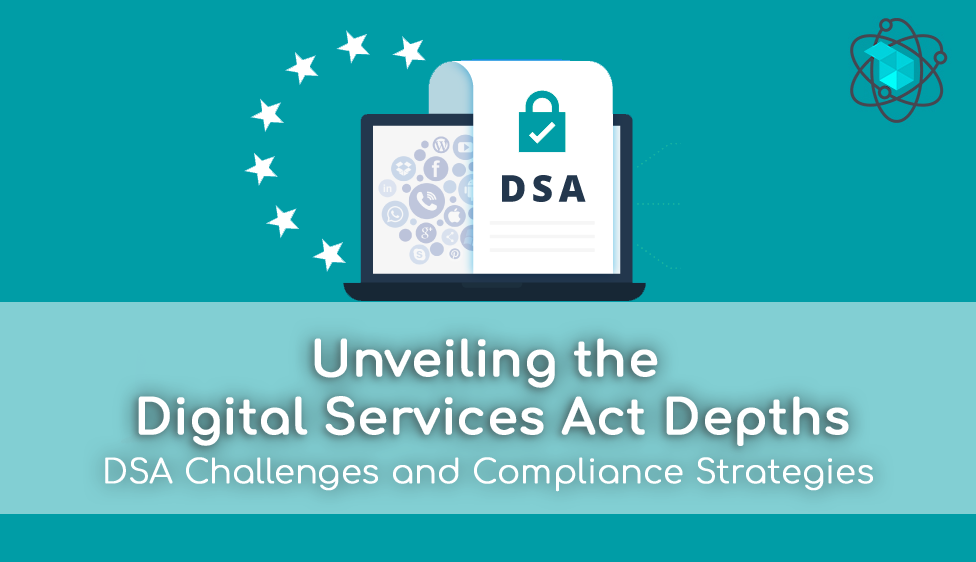
by Daniele Masiello | Feb 19, 2024 | Analytics, Digital Services Act, Tracking
Embark on an insightful journey as we delve into the final chapter of our exploration of the new EU legislations on digital markets: the Digital Services Act (DSA).
Having navigated the intricacies of Consent Mode V2 2024, shed light on its technical implementation, and uncovered the transformative impact of the Digital Markets Act (DMA), we now cast our gaze into the challenges introduced by the Digital Services Act. This comprehensive exploration will illuminate the implications for gatekeepers, businesses, and provide an exhaustive guide for successfully navigating the complexities of DSA compliance.
Discovering the Digital Services Act Landscape
The Digital Services Act stands as a regulatory beacon, a compass guiding digital services through uncharted territories. Unlike its predecessors, the DSA takes centre stage, addressing the intricate dynamics of digital services, with a mission to create a safer, fairer, and more accountable digital ecosystem.
Digital Services Act: A Crucial Pillar for the Digital Ecosystem
In echoing the significance of the DMA, the DSA emerges as a monumental step toward setting standards for the future digital economy. By curbing the unchecked dominance of big tech, Europe positions itself as a global benchmark for fair digital practices. The Act not only encourages fairness but also opens doors for app developers and small businesses, striving to make the online advertising market fairer.
Unveiling the Impact on Gatekeepers
Large Online Platforms (LOPs), identified as gatekeepers under the Digital Services Act, face a paradigm shift in their operations. The criteria for designating gatekeepers, including company size, user data gateway control, and market dominance stability, present a robust framework for assessing their influence. By subjecting gatekeepers to specific obligations, the DSA aims to dismantle monopolistic tendencies, fostering an environment where smaller players can compete more effectively.
Charting New Waters: Addressing Dominance Stability
The Digital Services Act’s focus on sustained and stable market positions for at least three years poses a critical challenge to gatekeepers. This provision prevents companies from leveraging their dominance over extended periods, promoting a healthier competitive landscape. Introducing this measure encourages market diversity, creating space for emerging players to thrive.
Gateway to Fairness: User Data Gateway Control
The evaluation criteria involving user data gateway control places emphasis on gatekeepers’ capacity to block competitors and actively engage users. This underscores the importance of preventing unfair practices that stifle competition. Gatekeepers are now compelled to ensure that their dominance doesn’t infringe on the access and opportunities available to other market players.
Signals of Change: The Strategic Role of User Consent
User consent signals emerge as a strategic component of DSA compliance, requiring platforms to implement effective mechanisms. This not only aligns with the broader privacy narrative but also emphasises user rights and autonomy. Platforms must navigate the delicate balance between providing personalised experiences and respecting user choices, forging a path towards a more ethical and user-centric digital landscape.
The Ripple Effect on Businesses
Beyond gatekeepers, the Digital Services Act brings about substantial changes for businesses navigating the digital realm. Enhanced transparency in data management becomes a cornerstone, necessitating a reevaluation of how businesses handle and communicate their data practices. Scrutiny of automated bidding techniques requires businesses to demystify complex algorithms, fostering a more transparent advertising environment.
Ethical Anchors: Digital Services Act as a Catalyst for Ethical Advertising
The DSA’s provisions related to advertising practices, such as the ban on targeted advertising based on sensitive categories, represent a significant step towards ethical advertising. This ensures that businesses prioritise user privacy and avoid manipulative techniques. The shift towards transparency in algorithms aligns with the broader industry push for ethical, accountable, and user-friendly digital advertising practices.
Crafting a Blueprint for Navigating DSA Challenges
Practical strategies for navigating Digital Services Act compliance extend beyond mere adherence to regulatory requirements. Businesses must proactively integrate these measures into their operational fabric, ensuring a sustainable and ethical digital presence.
Leveraging Compliance for Competitive Advantage
Rather than viewing DSA compliance as a burden, businesses can strategically leverage it for a competitive edge. Communicating transparent data practices and ethical advertising can enhance brand reputation and trust. Embracing Digital Services Act obligations becomes an opportunity for businesses to differentiate themselves in a crowded digital marketplace.
Collaborative Initiatives and Best Practices
DSA compliance can be complex, requiring collaboration not only within organisations but also across industries. Shared insights and best practices can facilitate a smoother transition towards compliance. Industry-wide initiatives, such as forums and collaborations, provide valuable platforms for businesses to collectively navigate the challenges posed by the Digital Services Act.
Navigating the Technological Landscape: Automated Bidding Techniques
Scrutiny of automated bidding techniques represents a pivotal aspect of DSA compliance. Businesses relying on automated bidding must embark on a journey of transparency, demystifying complex algorithms for stakeholders. This not only meets regulatory requirements but also aligns with broader industry trends advocating for transparency in digital advertising.
Striking the Balance: Personalisation and Transparency
Automated bidding techniques often form the backbone of personalised advertising. Striking the right balance between delivering personalised experiences and maintaining transparency becomes a nuanced challenge. Businesses must communicate clearly how automated bidding operates, ensuring that users understand the mechanisms shaping their online experiences.
Ethical Considerations in Automated Decision-making
The Digital Services Act’s emphasis on explaining automated decisions introduces an ethical dimension to digital advertising. Businesses must prioritise clear and understandable explanations, avoiding opaque algorithms that erode user trust. This shift towards ethical considerations in automated decision-making aligns with broader societal expectations for responsible and accountable technology use.
Preparing for the Future Digital Services Act Landscape
As businesses adapt to the current landscape shaped by the DSA, it’s essential to recognize the ongoing nature of regulatory evolution. The Digital Services Act positions itself as a dynamic framework, adapting to emerging challenges and technological advancements. Businesses must adopt a proactive approach, anticipating future amendments and staying ahead of the curve.
Cultural Integration: Digital Services Act into Corporate Culture
Successfully navigating DSA compliance requires a cultural shift within businesses. It’s not merely a checkbox exercise but an ongoing commitment to ethical practices, transparency, and user-centricity. Integration into corporate culture ensures that compliance is not viewed as a standalone obligation but as an intrinsic part of responsible business operations.
The Role of Industry Associations and Collaboration
Industry associations play a crucial role in shaping the trajectory of DSA compliance. Collaborative efforts within sectors can streamline best practices, provide collective insights, and contribute to a shared understanding of compliance challenges. Businesses should actively engage with industry associations to stay abreast of evolving Digital Services Act interpretations and foster a collective response.
Concluding the Deep Dive
As we conclude our exploration into the new EU legislation of digital markets, it’s evident that the regulatory landscape is undergoing a profound transformation. Specifically the Digital Services Act not only addresses immediate challenges but sets the stage for an ethical, transparent, and user-centric digital future. Businesses navigating these changes have an opportunity not just for compliance but for differentiation and leadership in a digital landscape that values fairness and innovation.
As we bid adieu for now, remember to stay digital and innovative, and trust the process for a fair and competitive digital future.
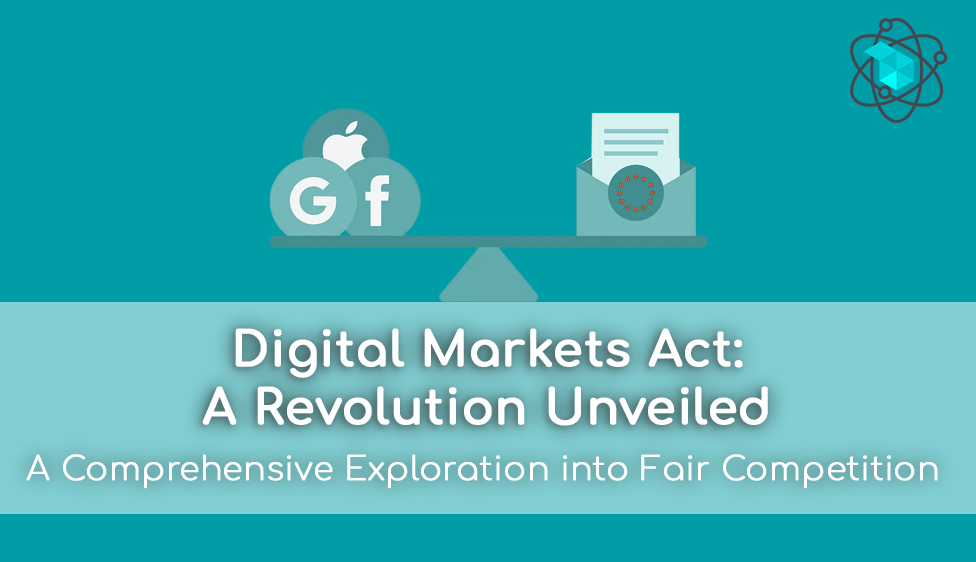
by Daniele Masiello | Feb 8, 2024 | Analytics, Digital Markets Act, Tracking
A Comprehensive Exploration into Fair Competition
Hello hello, Digital Pioneers!
As you know, we’ve not just been riding the waves; we’ve been steering the ship. In the past weeks, we’ve dived deep into the specifics, guiding you through actionable insights on Consent Mode 2024. Two blog posts have hit the digital airwaves, providing clarity on what, how, and when to navigate these uncharted waters.
But now, it’s time to take a step back, widen our lens, and dive into the grand narrative: the Digital Markets Act (DMA). This is not just another regulation; it’s a seismic shift in the digital landscape. Picture this: a journey that started with unravelling Consent Mode intricacies, escalated to targeted blog posts, and crescendoed into a webinar jam-packed with actionable insights. Now, as the dust settles, we’re zooming in on the Digital Markets Act: its origins, its purpose, and its far-reaching impact.
We’re not just exploring regulations; we’re decoding the very DNA of digital evolution. So, buckle up for a profound exploration into the why, the how, and the intricate details of the DMA. This isn’t just a ride; it’s a voyage into the future of digital competition and regulation. Welcome aboard!
Digital Markets Act Unwrapped
In the ever-shifting tides of digital dominance, the DMA stands as a beacon of change.
In a world where big tech’s dominance seemed insurmountable, an era where fair competition in the digital space felt like an elusive dream. Then, enter the Digital Markets Act, a regulatory titan designed to reshape the very foundations of the tech landscape.
Andreas Schwab, the rapporteur from the European Parliament’s Internal Market and Consumer Protection Committee, passionately declares that “The agreement ushers in a new era of tech regulation worldwide”, marking a paradigm shift in how we approach technology governance. The DMA is not merely a set of rules; it’s a bold proclamation that the era of unchecked big tech dominance is over.
“The Digital Markets Act puts an end to the ever-increasing dominance of big tech companies,” Schwab asserts, cutting through the digital clutter with a decisive declaration. The significance of this cannot be overstated. It’s a rallying cry for fairness, challenging the status quo and demanding that these tech giants allow for fair competition on the internet.
“With the DMA, Europe is setting standards for how the digital economy of the future will function” Schwab continues, outlining the legislative vision that extends beyond geographical boundaries. Europe, through the Digital Markets Act, becomes the vanguard of a digital economy that prioritises fairness and competition. A global benchmark for others to follow – how proud are we to call ourselves European?
Guys, that’s a rhetorical question. No answer will be provided. We are, full stop – end of discussion.
Schwab’s words resonate further: “App developers will get completely new opportunities, small businesses will get more access to business-relevant data, and the online advertising market will become fairer.” This isn’t just about regulations; it’s about creating a digital ecosystem where opportunities abound, where data is accessible, and where fairness prevails in the competitive arena of online advertising.
Welcome to the revolution! 💡🌐✨
Gatekeepers Unveiled
Behind the scenes of digital empires lie the enigmatic gatekeepers, the architects of the online realm. Let’s pull back the curtains and explore the intricate world of these giants, also known as Large Online Platforms (LoPs).
Gatekeepers, the formidable entities that control access to the digital marketplace, play a pivotal role in shaping the online landscape. These are the tech behemoths, the trendsetters, and the digital custodians who have, until now, held considerable power.
Within the DMA’s framework, Large Online Platforms (LoPs) emerge as the prominent figures in the gatekeeper narrative. These platforms, owing to their sheer size and influence, have become the focal point of regulatory attention. The Digital Markets Act disrupts these traditional power dynamics by imposing a set of obligations on these digital giants.
You might now be asking yourself: how the DMA identified these so-called gatekeepers? Please do not answer this question alone – you’re stealing our job. The Digital Markets Act identified gatekeepers based on:
- Company Size: Annual revenues equal to or exceeding €7.5 billion in the last 3 years or a total market value of at least €7.5 billion in the last year, along with providing platform services to at least three EU states
- User Data Gateway Control: Evaluation includes the registration of at least 10,000 active European users in the last year, with the capacity to block competitors, and having more than 45 million active European end-users per month
- Market Dominance Stability: A sustained and stable market position, meeting the first two criteria simultaneously for at least three years from the verification of requirements
Back to questions: why are these obligations necessary? Well, it’s not merely about imposing rules and regulations; it’s a quest for a level playing field in the digital arena. The DMA’s vision extends beyond restriction: it’s a proactive effort to foster fair competition, ensuring that the gatekeepers facilitate an environment where innovation thrives and smaller players get a chance to compete.
Businesses in da Landscape
Now let’s shift our focus to businesses, and illuminate how the Digital Markets Act is reshaping the digital destiny of enterprises: The DMA is a legislative response to risks posed to the openness and fairness in digital markets where gatekeepers hold sway. It acts as a regulatory compass, steering businesses towards a more level playing field in the digital arena.
- Transparency in Data Management:
One of the key facets of the Digital Markets Act’s impact on businesses is the enhancement of transparency in data management within marketing platforms. This addresses the need for a clearer understanding of how data is handled in the intricate ecosystem of digital marketing
- Automated Bidding Techniques under Scrutiny:
The DMA aims to demystify automated bidding techniques functioning – businesses operating in digital markets will now face heightened transparency requirements regarding the operation of automated bidding, offering stakeholders a more comprehensive view of the mechanisms
- End User Consent Signals:
The Digital Markets Act introduces a paradigm shift in the relationship between gatekeepers and end users. To bolster the right of end users to manage their preferences, gatekeepers are mandated to require consent signals. These signals ensure that users have control over their engagement with core platform services, allowing them to unsubscribe as effortlessly as they subscribe
- Google’s Response: Google Consent Mode
In response to the DMA’s emphasis on end user consent signals, industry giant Google has adopted the Google Consent Mode as a mechanism to convey user consent preferences to their core platform services
A Fair Playing Field
Before the advent of the Digital Markets Act, the digital market resembled a battlefield dominated by a few formidable players. The landscape was characterised by a lack of a level playing field, where smaller players found it arduous to compete against the dominance of digital behemoths. Innovation often languished in obscurity as the market dynamics favoured the established giants.
One of the key advantages the DMA brings is the empowerment of small players. By creating an environment that champions fair competition, the DMA ensures that innovative ideas and businesses, irrespective of their size, have the opportunity to flourish.
The DMA doesn’t just change the game; it reinvents it. The market, once reserved for big sharks, now opens its doors to a diverse array of players. This shift is not just regulatory; it’s a cultural transformation that redefines success in the digital landscape. A digital realm where fair competition thrives, innovation blossoms, and the market becomes a playground for players of all sizes.
The Final Note: A Cultural Transformation and Catalyst for Change
The Digital Markets Act doesn’t merely regulate; it instigates a cultural transformation. Small players, once relegated to the shadows, now stand empowered. The market, once reserved for big sharks, becomes a playground for innovation of all sizes.
Additionally, the DMA serves as a powerful force propelling European online markets to carve out their distinct identity, distancing themselves from the global landscape. As the Digital Markets Act takes centre stage, it reshapes not only the dynamics within but also positions Europe at the forefront of a new era in the digital realm.
And as we conclude this chapter of DMA revelations, stay tuned for our next instalment – a captivating exploration of the Digital Services Act (DSA). But for now, as our brains savour the earned bread-and-butter, we bid you adieu with a sassy “byeee for now!”
Stay digital, stay innovative, and may the DMA guide you in your quest for a fair and competitive digital future.





